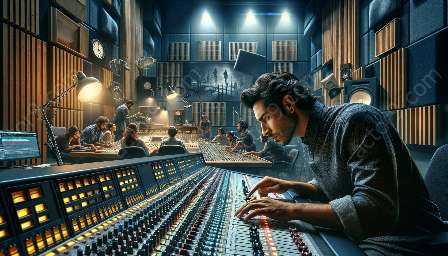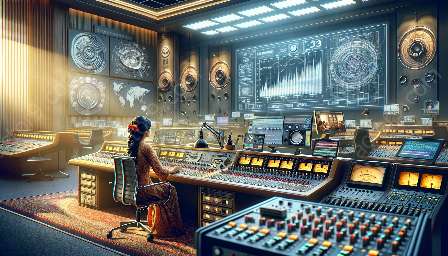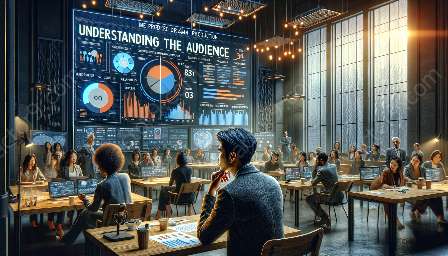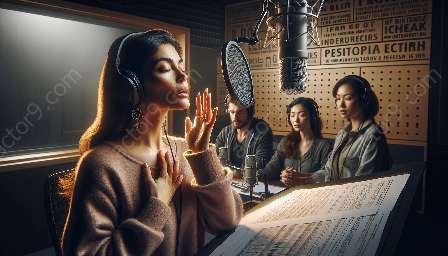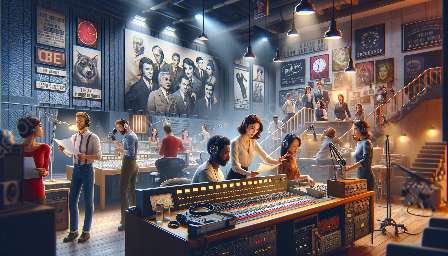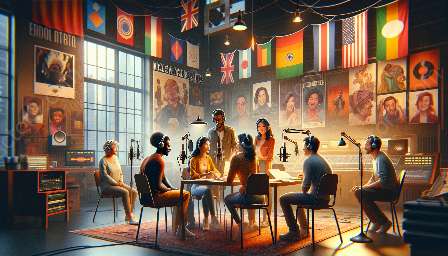Radio drama is a unique form of storytelling that relies heavily on the writer's ability to convey setting and atmosphere through the script. In this topic cluster, we'll explore techniques and tips for effectively creating a vivid sense of time and place in radio drama scripts, along with insights into how these elements contribute to the overall production. Whether you're new to writing scripts for radio drama or seeking to enhance your skills in radio drama production, this comprehensive guide will help you craft compelling and immersive experiences for your audience.
Understanding the Importance of Setting and Atmosphere
Setting and atmosphere play a crucial role in radio drama, as they provide the backdrop against which the characters and plot unfold. Without a strong sense of setting, listeners may struggle to connect with the story and visualize the world in which it takes place. Additionally, atmosphere sets the mood and tone of the narrative, influencing the emotional impact the drama has on its audience.
Researching and Immersing Yourself
Begin by researching the time period, location, and cultural context of your radio drama script. Immersing yourself in the setting and atmosphere will allow you to accurately capture the nuances and details that bring the story to life. Listen to music, watch films, and read literature from the era or place you're depicting to gain a deeper understanding of the sights, sounds, and feelings associated with it.
Embracing Soundscapes and Effects
Soundscapes and effects are powerful tools for evoking setting and atmosphere in radio drama. Use descriptive sound cues in your script to paint a vivid sonic picture of the environment. From the bustling streets of a city to the quiet tranquility of a countryside, strategic use of sound can transport listeners to the world of your story.
Capturing the Essence Through Dialogue
Dialogue is another essential component for conveying setting and atmosphere in radio drama. Through character interactions and exchanges, you can reveal specific details about the setting and atmosphere without overtly stating them. Consider the dialects, slang, and speech patterns of your characters, as well as the conversations they have, to infuse authenticity into the environment.
Creating Visual Imagery Through Narration
Narration can also be used to create visual imagery that enhances the setting and atmosphere. Craft descriptive narrations that engage the listener's imagination, allowing them to visualize the world you've created. Use evocative language and sensory details to paint a rich tapestry of sights, sounds, and sensations.
Structuring Your Script for Impact
Consider the pacing and structure of your script to maximize the impact of the setting and atmosphere. Build tension and anticipation through well-timed reveals of setting details, and use transitions to smoothly transport the audience between different locations and moods. Use scene headings, sound instructions, and pacing cues to guide the production team in realizing your vision.
Collaborating with the Production Team
Finally, effective communication and collaboration with the production team are essential for translating your script's setting and atmosphere into a compelling audio experience. Work closely with directors, sound designers, and actors to ensure that the nuances of the setting and atmosphere are captured in the final production. Provide clear guidance and feedback while staying open to creative interpretations that elevate the script.
By mastering the art of conveying setting and atmosphere in radio drama scripts, you can create immersive and unforgettable experiences for your audience. As you continue to refine your skills in writing scripts for radio drama and radio drama production, remember to experiment with different techniques and remain attentive to the impact of setting and atmosphere on the overall storytelling process.





